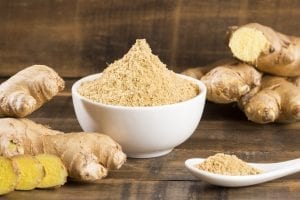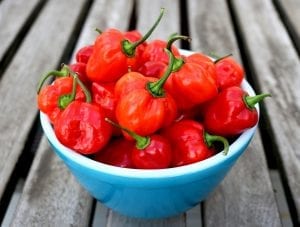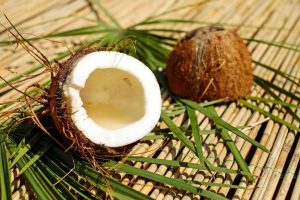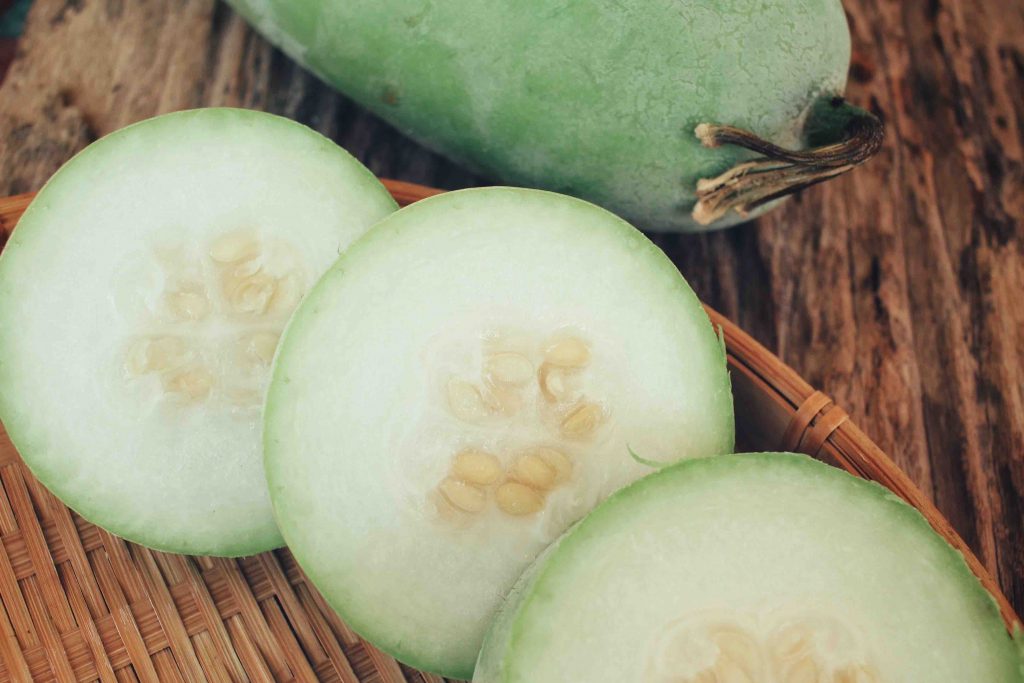
In Winter melon is a large oblong-looking fruit with a mellow taste. This fruit is commonly used as a vegetable in Asian cuisines, particularly in Chinese and Indian foods. It is a versatile ingredient found in soups, stir-fries and sweet snacks, and beverages. The global frenzy of bubble tea has also spurred many to hop on the bandwagon to create winter melon milk tea – a refreshingly sweet boba drink that is becoming increasingly popular in Asia. Read on to find out more about this melon fruit, and you might even be enticed to start cooking with these gentle giants.
What Is Winter Melon?
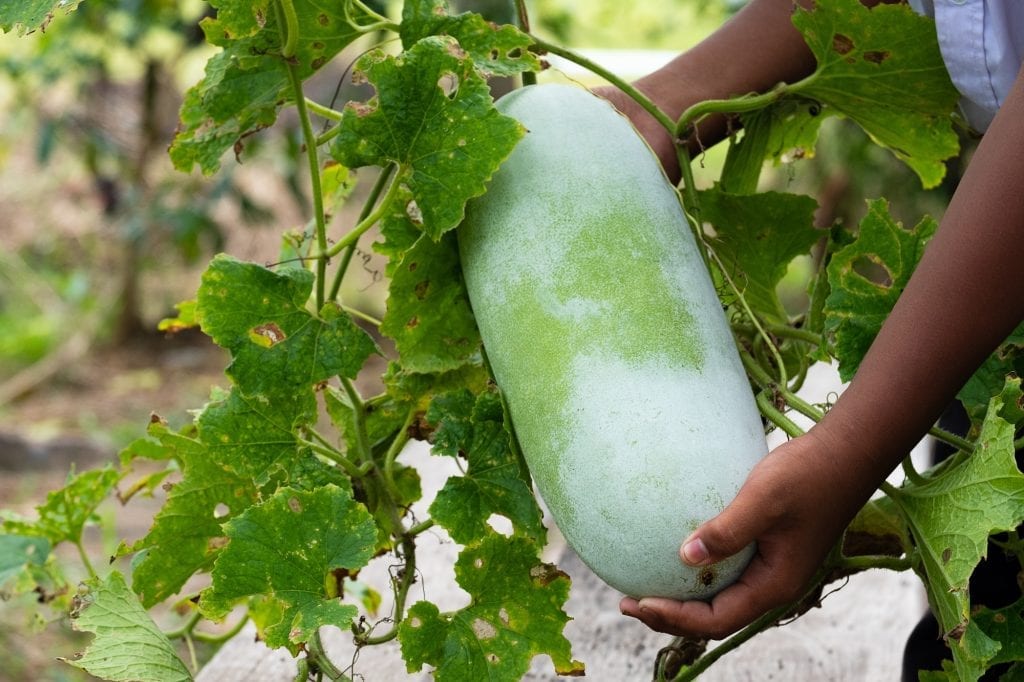
Winter melon, also scientifically referred to as Benincasa hispida, is a fruit that looks like a crossover between a watermelon and a cucumber. It belongs to the gourd family, or the cucurbit family, along with cucumbers, melons, zucchini, pumpkins, and squash. Despite its name, winter melons thrive in warm climates. They hail from the sunny regions of South and Southeast Asia, but these gourds are also sold in other parts of the world.
- Origin: South, Southeast Asia
- Shape: Usually oblong, but round in certain countries
- Taste: Similar to watermelon rind or cucumber
- Average length: 6-32 inches (15-80 cm)
- Average weight: 6-12 lb (2-5.5 kg)
- Uses: Typically in Asian cuisines such as soups and desserts
It Is Also Known As Ash Gourd, Wax Gourd, or White Gourd.
Winter melons develop on the vines of a winter melon plant. While growing, these gourds have fine silver hairs on their skin that resemble drops of snow, making them look like frosted fruits. This explains we call winter melons “white gourd” or “winter gourd”.
In Chinese culture, these fruits are called dong gua, a direct translation for winter melon/gourd because of their pre-harvest frosty appearance. Their silver hairs and fuzzy texture also tend to confuse people with Chinese Hairy Melon or mo gwa/mo qua. It is also another fuzzy melon, only much smaller in size.
Winter melons generally take about four to six months of harvesting (approximately 110 days) before they are fully mature. When they do, the hairs on them disappear. The skin of the melons becomes powdery and waxy with an ashy appearance which explains why this fruit also goes by “ash gourd” or “wax gourd”.
What Does Winter Melon Taste Like?
The flesh of winter melons is white and has a mild grassy flavor that resembles a watermelon rind or a cucumber. However, its uniquely bland flavor allows it to absorb the taste of the herbs, spices, and other seasonings that it’s cooked in. This may be the reason why although it’s technically a fruit, we often eat it as a vegetable in Asian cuisines.
When cooked, winter melon becomes soft and has a similar texture to zucchinis. That is why they can be substituted for each other in various recipes. If you do not have zucchinis, you can opt for watermelon rinds (yes, it is edible), which are great substitutes for winter melons as well.
READ ALSO: English Cucumber: How’s It Different From Other Cucumbers?
How to Clean and Prepare Winter Melon
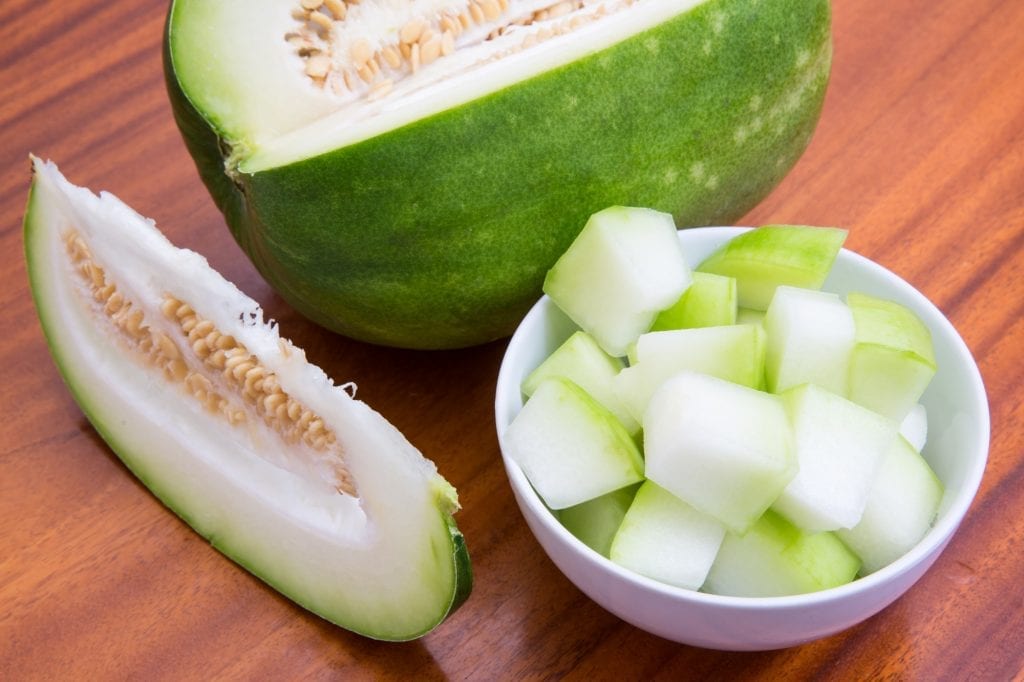
Winter melons are fairly easy to prepare. You can treat them the same way as you would with most fruits and vegetables.
- Rinse the winter melon – First, rinse the melon fruit until it’s completely clean. Make sure to remove the waxy, powdery substance on its surface so that it does not leave behind sticky residues.
- Peel and remove the melon seeds – After you’ve cleaned the melon, the next step is to use a peeler or knife to remove the rind. Given its size, you may want to consider slicing your melons in half/quarter first. This helps you to remove the rind easily. Then, proceed to scrape off the seeds with a spoon along with the soft flesh surrounding them.
- Cut into squares – Once your winter melon is clean, peeled, and seeded, you can now proceed to slice it. Usually, we cut the melon into squares. Do this by slicing the melon horizontally into four equal parts, and then into eight equal parts.
How to Cook Winter Melon
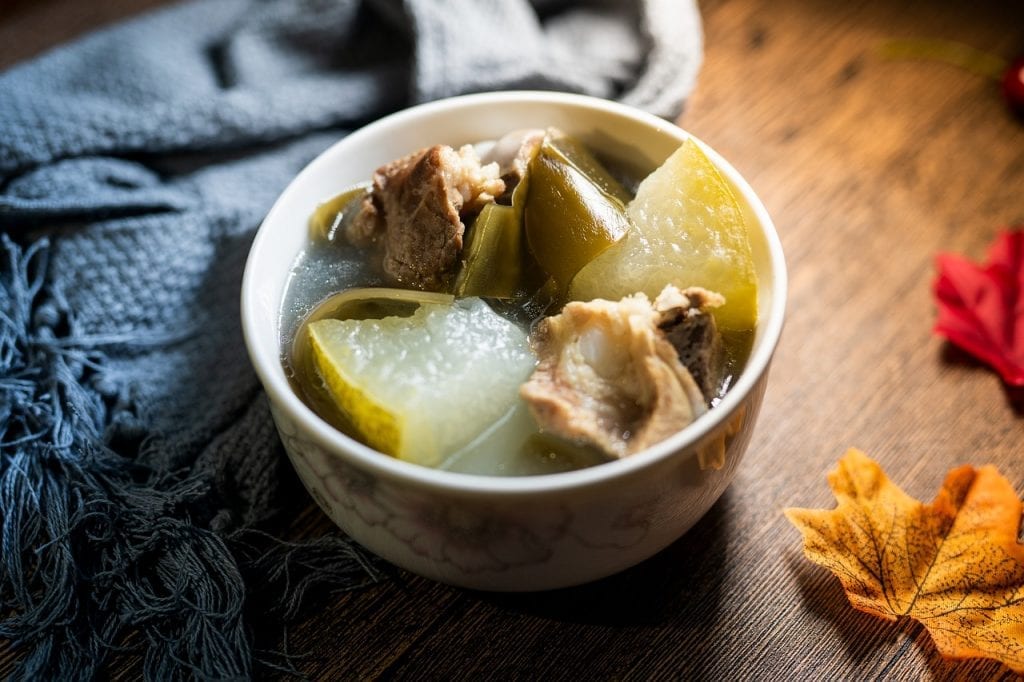
Now that you have prepared your melons, you can start cooking them! The beauty of this fruit is that it is a versatile ingredient. From the usual steaming to braising, there are several ways that you can cook winter melons. It all boils down to the dish you intend to make. Whichever the case, these melons serve up healthy goodness with incredible flavors that will leave you satisfied.
The most common way of cooking winter melons is simmering. Simmering winter melons is a frequent practice in Chinese cuisine to make soups or tea. It is an effective cooking method that softens winter melons so that they become tender and are easily digestible. This is especially helpful for the elderly or people who have weaker teeth and digestion problems.
Other ways that we can cook winter melons include steaming and parboiling, which can be easily done with a steamer or a pot. However, for those with a stronger taste palette, you might want to consider stir-frying or braising your melons instead. These cooking methods are fantastic ways for your winter melons to absorb more intense flavors and make a hearty meal.
Winter Melon Recipes To Try
Winter melon is prevalent in Asian cuisines. In Chinese cuisines, this fruit is usually simmered in broth to make winter melon soup and beverages like herbal teas to help relieve the summer heat. You can also find it as a sweet filling in the Chinese pastry, Wife’s cake (or Sweetheart cake), or hopia, the Philippine sweet bean pastry that resembles mooncakes.
Be it sweet or savory, we can use this gourd in various cooking recipes.
- Winter Melon Soup – For a hearty meal, simmer winter melon in chicken or pork broth along with dried shiitake mushrooms and red dates. This soup is perfect for a warm and cozy dinner on a cold night.
- Winter Melon Tea – One of the easiest ways to relieve the warm afternoon heat is to enjoy this sweet yet fragrant drink. All you need to do is boil winter melon flesh with some brown sugar and rock sugar. Let it cool and top it off with some ice.
- Zucchini Stir Fry – Winter melons are a great substitute for any recipe with zucchinis. So, treat winter melons as you would with zucchinis in this recipe and stir fry them with some scallops for that rich seafood flavor.
Winter Melon Health Benefits and Nutritional Value

For anyone who is keen on losing weight, be sure to add this fruit to your diet. Winter melon comprises 96% of water and is low in calories, fats, protein, and carbohydrates. Studies have also shown that this melon boasts a good amount of fiber, vitamin C, and antioxidants that may aid digestion and help protect the heart. This gourd also contains small amounts of other essential minerals like calcium, iron, magnesium, and zinc.
The gourd’s mild sweetness also contains healing properties that may slow down acute reactions and detoxify the kidneys, boosting our immune systems. Studies have also shown that this melon can sharpen the mind and protect the body against type-2 diabetes and cell damage to facilitate body development. Word has it that its medicinal and healing properties have long been recognized since the Ayurvedic period and in current Traditional Chinese Medicine (TCM).
In TCM practice, practitioners consider winter melon as one of the “herbs that clear heat and relieve toxicity in the body” because of its “cooling nature”. Often, “heat in the body” refers to inflammatory and infectious conditions like edema or swelling of body parts, phlegm, and wheezing.
Where to Buy Winter Melons

These gourds are available all year round at local Asian markets or supermarkets. During peak harvest in the late summer to early winter, you would notice many places sell winter melons as a whole. Other times of the year, they are sold in slices or cubes. No matter whole or sliced, ensure that the melons are firm and unbruised when you buy them.
How to Store Winter Melon
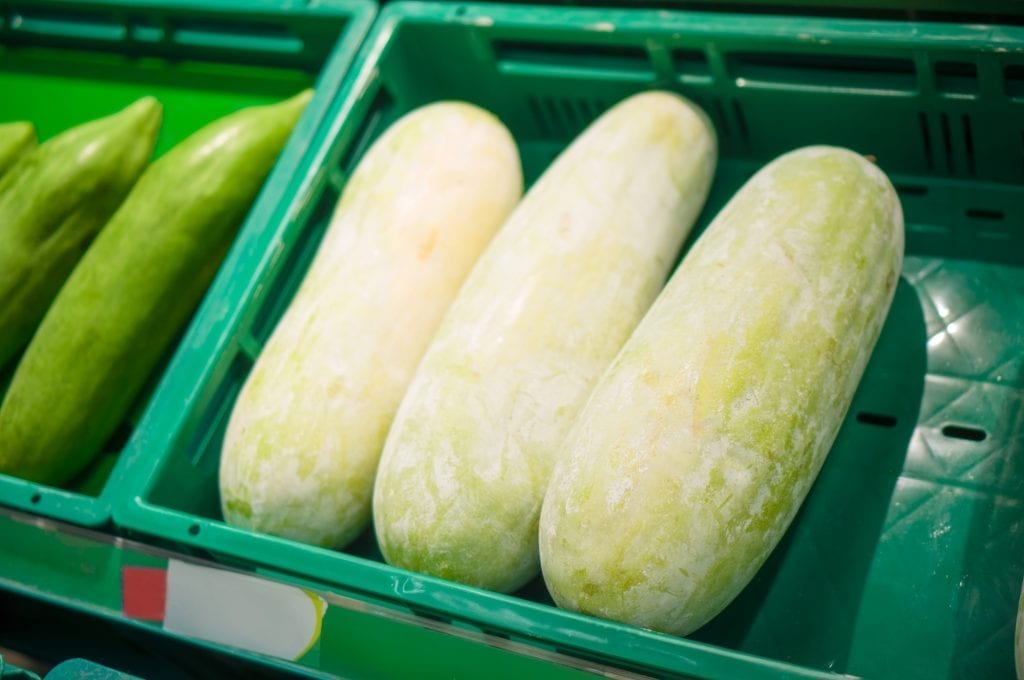
Winter melons have a long shelf life of up to a year. However, the shelf life varies with where and how they are stored.
Store It Whole in a Cool and Dry Place
Like most fruits, you can store a whole winter melon. The best place to store your gourd is in a cool and dry place like a pantry or a closed cabinet. They should stay good for several months and even up to a year.
Refrigerate in Slices
If your gourd is already cut, you can still keep its flesh for a couple of days. The first thing you should do is cube the melon into squares. Then, seal them in an airtight bag or container, and place them in the crisper drawer of your refrigerator.
Pickle the Flesh
You can also try pickling your gourd, a traditional preservation method that dates back to Ancient China. To do this, cube your melon into equal parts. Then, submerge them in a jar of vinegar with spices of your choice. It’s best to keep your pickled melon in the refrigerator to retain freshness. Typically, pickled food lasts in the fridge for six months or more.
Make Winter Melon Candy
For any sweet tooths, you should definitely try candying winter melons. Slice your winter melons into an inch thick and soak them in sugar syrup (heated sugar and water) for 24 hours. This preservation method gradually dehydrates the melon slices and you will end up with a crystallized fruit to snack on.
Was this page helpful?
Read Next: What Is Calamari and How To Cook It




